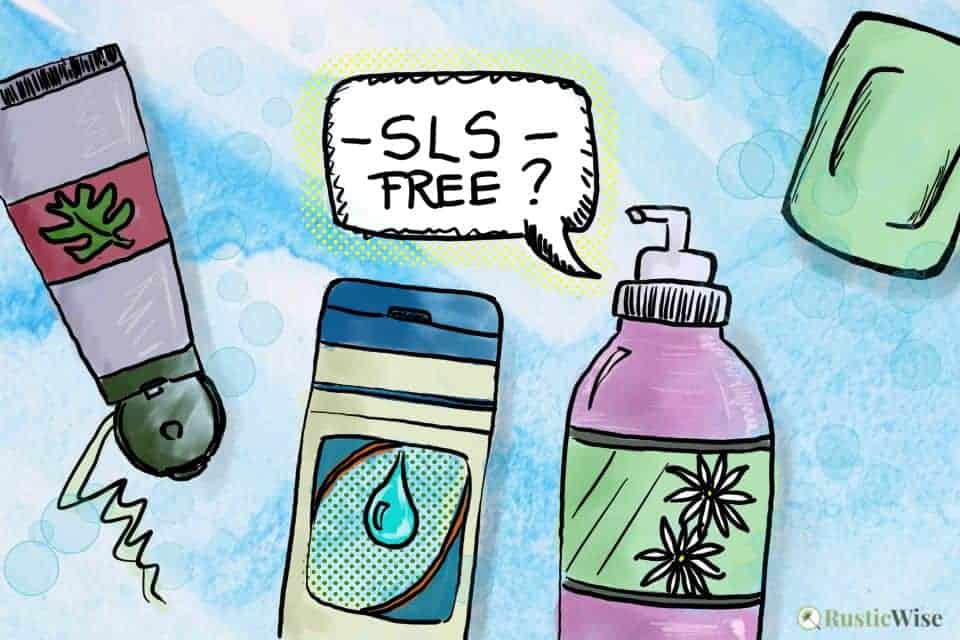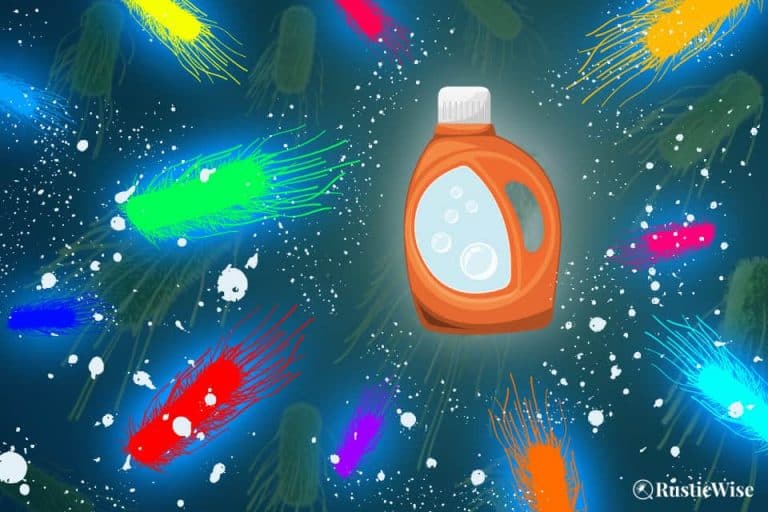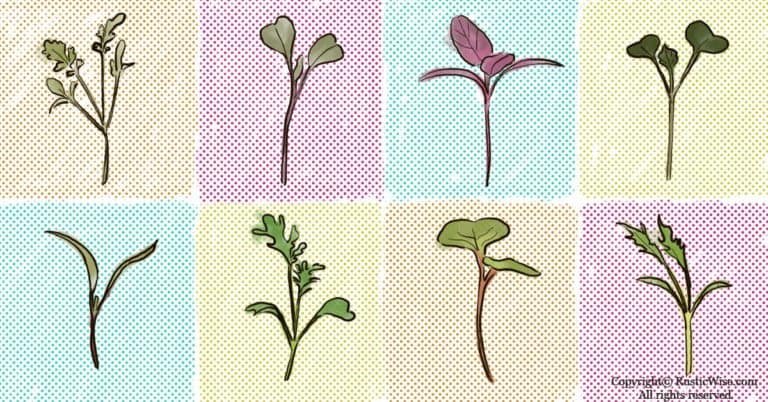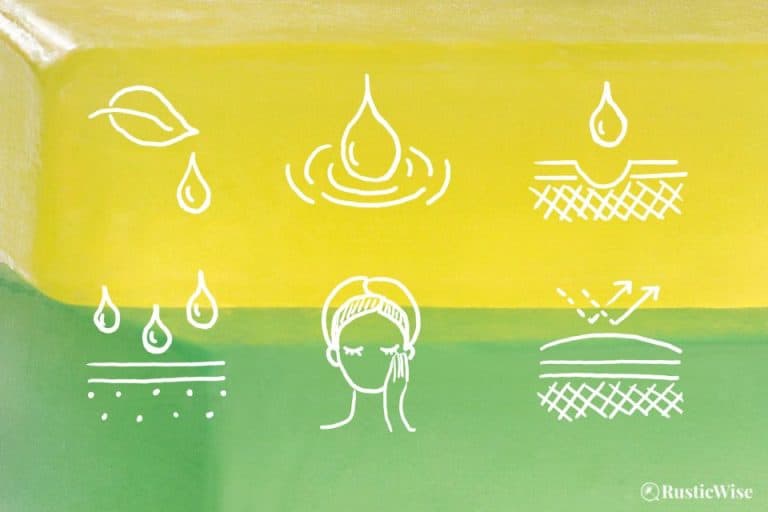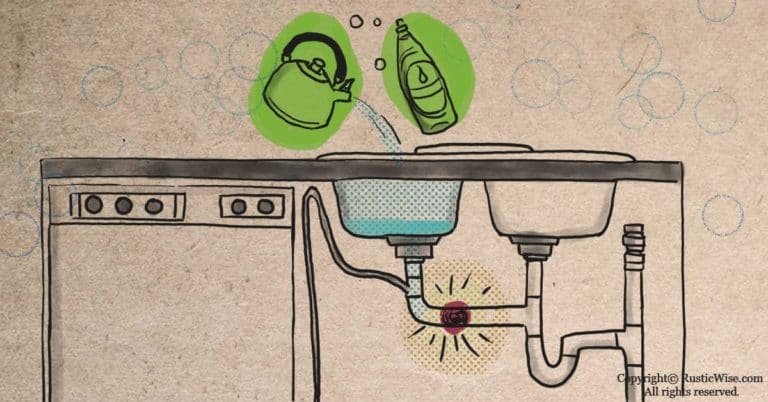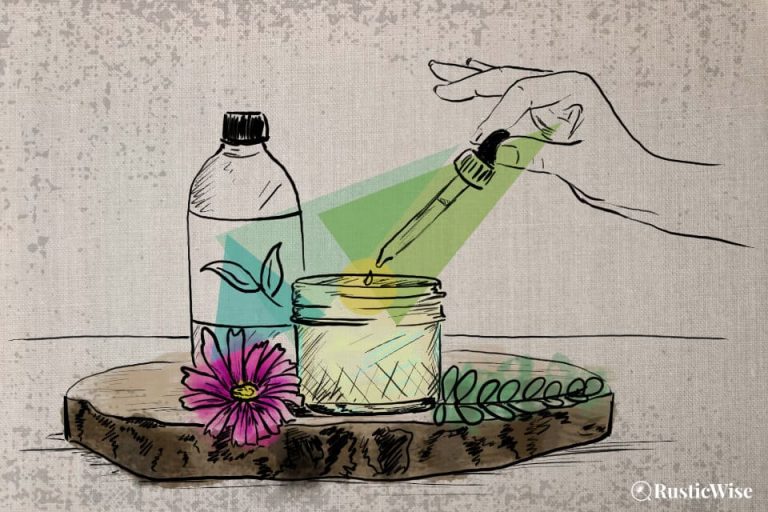What is SLS Free? Why This Term Can Be Misleading
One of the most common ingredients you’ll see listed in your commercial soap, shampoo, and toothpaste is sodium lauryl sulfate (SLS). It’s a synthetic surfactant with strong cleansing properties and helps boost lather. Unfortunately, many people experience skin irritation or dryness after using products with SLS.
Sometimes you’ll see products labelled “SLS free.” So, what is SLS free, exactly? This term simply means the product contains no sodium lauryl sulfate. BUT, the product may contain other similar chemicals that cause similar skin irritating symptoms.
SLS and its companion sodium laureth sulfate (SLES) are two compounds that have developed a bad rap for a number of reasons. If you’re wondering about whether it’s safe to use personal care products with SLS, we’ll clear the cobwebs and take a closer look at this chemical plus safer alternatives. We’ll also debunk some common myths about SLS along the way.
What exactly is sodium lauryl sulfate (SLS)?
Sodium lauryl sulfate (SLS), sometimes spelled as “sulphate,” is a type of anionic surfactant. A surfactant is an ingredient that reduces surface tension between oil and water. It allows dirt and other particles to wash away clean.
Besides its strong cleaning properties, manufacturers use SLS as a foaming agent, which creates the rich lather most of us enjoy in shampoos and soaps.
SLS also goes by other names, including:¹
- Sodium laurilsulfate
- Sodium dodecyl sulfate (SDS)
- Monododecyl ester sodium salt sulfuric acid
- Sodium salt sulfuric acid
- Monododecyl ester
Since the 1930s, sodium lauryl sulfate has been used in various body care products, beauty products, and household cleaners.²
How is SLS made?
Manufacturers can derive SLS from plant-based products, such as palm oil. Or, they can derive them synthetically via petroleum-based products.
They create SLS via synthesis of lauryl alcohol together with sulfur trioxide. This creates hydrogen lauryl sulfate, which is neutralized with sodium carbonate (aka washing soda) to finally make SLS.¹
SLS is the sodium salt of lauryl sulfate.
How much SLS do everyday products contain?
The levels of SLS vary according to the manufacturer and the product type. The average consumer may have a hard time discerning how much SLS is actually in a product based on the ingredients label alone.
One study found the following range of levels:¹
- Cosmetic products: Ranges between 0.01 percent to 50 percent.
- Cleaning products: Ranges between 1 percent and 30 percent.
But, products that are rinsed off or have minimal contact with skin may contain higher levels of SLS.
Those that are meant as leave-on products (think lotions and creams) have a limit of between 0.05 to 2.5 percent SLS in many countries.³
A note on using products safely
Some cleaning products or laundry detergents which contain higher levels of SLS are not intended for long-term exposure to skin. When you’re using these types of products, protect yourself by wearing gloves, and minimizing exposure to skin. If any contact with skin occurs, rinse clean!
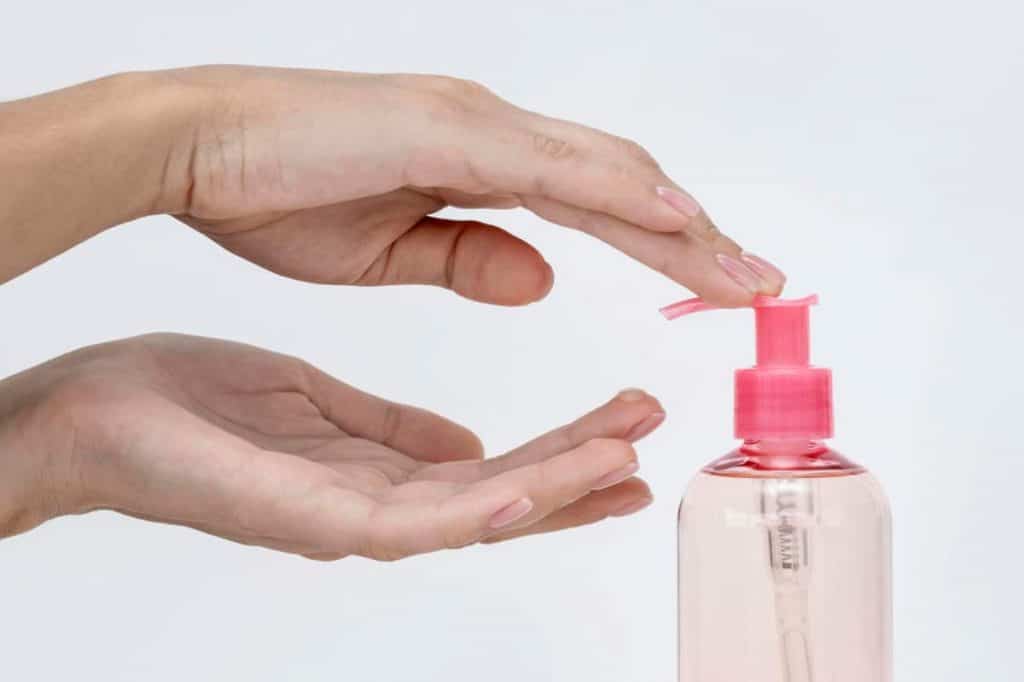
What is “SLS free”?
Many manufacturers try to market their products as “safer” and “milder” by slapping on a label such as “SLS free”, or “SLS and SLES free.”
The reality is that while the product may not contain SLS or SLES, it may still contain other similar chemicals which perform essentially the same function (and may lead to similar side effects as SLS on skin and scalp).
The Federal Trade Commission says the following about Free-of claims:⁴
This new section advises that, even if true, claims that an item is free of a substance may be deceptive if:
(1) The item contains substances that pose the same or similar environmental risk as the substance not present; or
(2) the substance has not been associated with the product category … The second prong cautions that free-of claims may deceive consumers by falsely suggesting that competing products contain the substance or that the marketer has ‘‘improved’’ the product by removing the substance.
The takeaway: Take labels such as “SLS free” with a grain of salt. Check out the ingredients list to find out what’s really in the product.
What does SLS do in everyday household products?
As sodium lauryl sulfate is inexpensive and easy to produce, you’ll find it used in a wide range of products you have at home.²
Household cleaners are essentially a form of synthetic detergent that work to strip surfaces of fat, oil, and grease to remove stains. Here are a few cleaning products you’ll find containing SLS:
- Dish soap
- Degreasers
- Laundry detergent
In skincare and body products, it works to build foam and strong lather. And of course it also works to clean. You can find SLS in the following personal care products:
- Toothpaste
- Bath bombs
- Shampoos and conditioners
- Hair dye and bleach
- Body wash or shower gels
- Bath oils or salts
- Foaming facial cleansers
- Shaving cream
- Cosmetics
Did you also know that SLS is sometimes used as a food additive? It works as an emulsifier to thicken foods or to change the texture. You’ll find it used in:
- Marshmallows
- Dried egg products
- Some fruit juices (to mix acids with liquids)
Is SLS safe for your skin?
There are opposing sides whether SLS is safe on skin.
On one hand, many federal agencies deem SLS as safe for use when used as intended.
In the U.S. the Cosmetic Ingredient Review (CIR), which is a scientific panel that falls under the Personal Care Products Council has said that SLS is safe for personal care products that are designed to be cleanly rinsed from skin and hair (think body wash, shampoos, and conditioners). Leave-on products have a cap on the level of SLS it can contain (no more than 1 percent.)²
(And the U.S. Food and Drug Administration (FDA) lists SLS as a safe food additive.)
The U.S. Environmental Working Group (EWG) gives sodium lauryl sulfate a rating of 1–2 (Fair), depending on the usage.⁵
However, “safe” to use and “good for you” are two different beasts.
We know SLS is a skin and eye irritant (we all know that getting shampoo in your eye stings a bit!). It’s also irritating to the respiratory system when inhaled and is toxic when ingested.
One 2003 study examined 1,600 patients and found that close to 42 percent of people experienced an irritant reaction on skin.⁶
Another study points to the ability of SLS to penetrate deeper into skin than previously believed. SLS can penetrate between 5 and 6 millimeters below the point of topical application.⁷
One of the reasons why SLS is harder on skin is this ability to penetrate the skin barrier.
And a 1995 study found that the warmer the temperature of the water used for washing with SLS, the higher levels of skin irritation participants experienced. (Note to self: avoid using hot water when washing!)⁸
The good news is that any skin irritation associated with SLS appears to stop shortly after products containing SLS have ceased.⁹
In many studies, researchers use SLS as a baseline skin irritant for patch tests.
Another reason to avoid SLS is that it may be toxic to aquatic animals according to the World Health Organization (WHO).¹⁰
Some people may use SLS products and experience little to no side effects. Others with more sensitive skin may experience more severe symptoms. Some common side effects of SLS include:
- Dry skin, flaky or itchy skin after using soaps, lotions, body washes, or shower gels containing SLS. Some people may develop skin conditions, such as eczema.
- Dry scalp or dandruff after using shampoos or conditioners with SLS. Some people experience dry ends on hair.
- Dry skin around the corners of the mouth, or cankersores after using toothpaste with SLS. (While this side effect is less common, some people are more sensitive to this chemical).
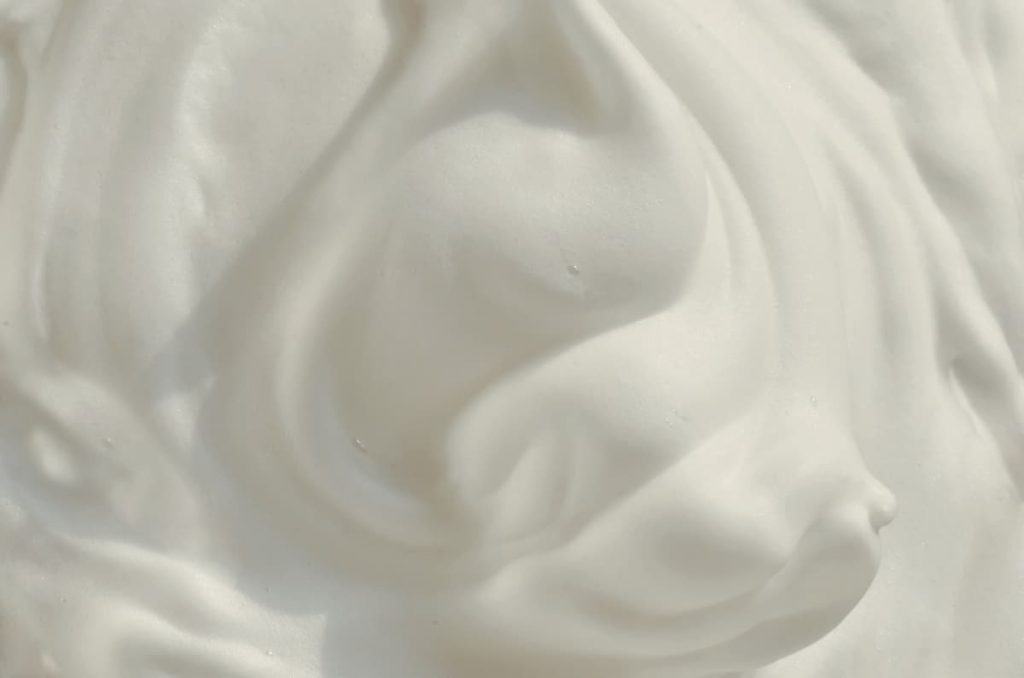
Credit: Yay Images
Common myths about SLS (no, it doesn’t cause cancer)
Much is misunderstood about sodium lauryl sulfate. Here are a few common misconceptions debunked.
One 2015 study finds the following conclusions about SLS:¹
- SLS has been falsely called a carcinogen. At this point, there are no strong links between SLS and cancer;
- SLS is NOT known to cause hair loss. So far, there is little scientific evidence on SLS’s long-term effects on hair follicles;
- SLS does NOT build up in vital organs (brain, heart, or liver) to develop organ toxicity. Some say that SLS is absorbed by the bloodstream and may develop organ toxicity in this manner. In reality, most SLS remains near the skin’s surface. Any SLS actually absorbed by blood is taken care of by the liver and then excreted by the body; SLS does NOT lead to dermal sensitization (the ability to make skin more allergic or sensitive to repeated applications).
Does homemade natural soap contain SLS?
No, bars of soap made from scratch do not contain any SLS. While the ingredients in each soap recipe differ, at its most basic, a natural soap recipe requires just three ingredients: distilled water + sodium hydroxide lye + oils/fats.
If the mere mention of lye freaks you out, don’t worry—there’s no active lye in the finished soap. Lye is an integral part of the soap making process as it converts oils/fats into soap molecules.
If everything is done properly, the finished bar of natural soap is perfectly safe to use on your skin.
So how does a bar of natural soap produce lather without sodium lauryl sulfate?
The secret lies in the unique properties of the vegetable oils used. Two oils in particular are known for producing lovely bubbly lather: coconut oil and castor oil.
Coconut oil creates hard bars of soap with high cleansing qualities and creates fluffy lather, too. Castor oil, when used in small amounts, creates bubbles too.
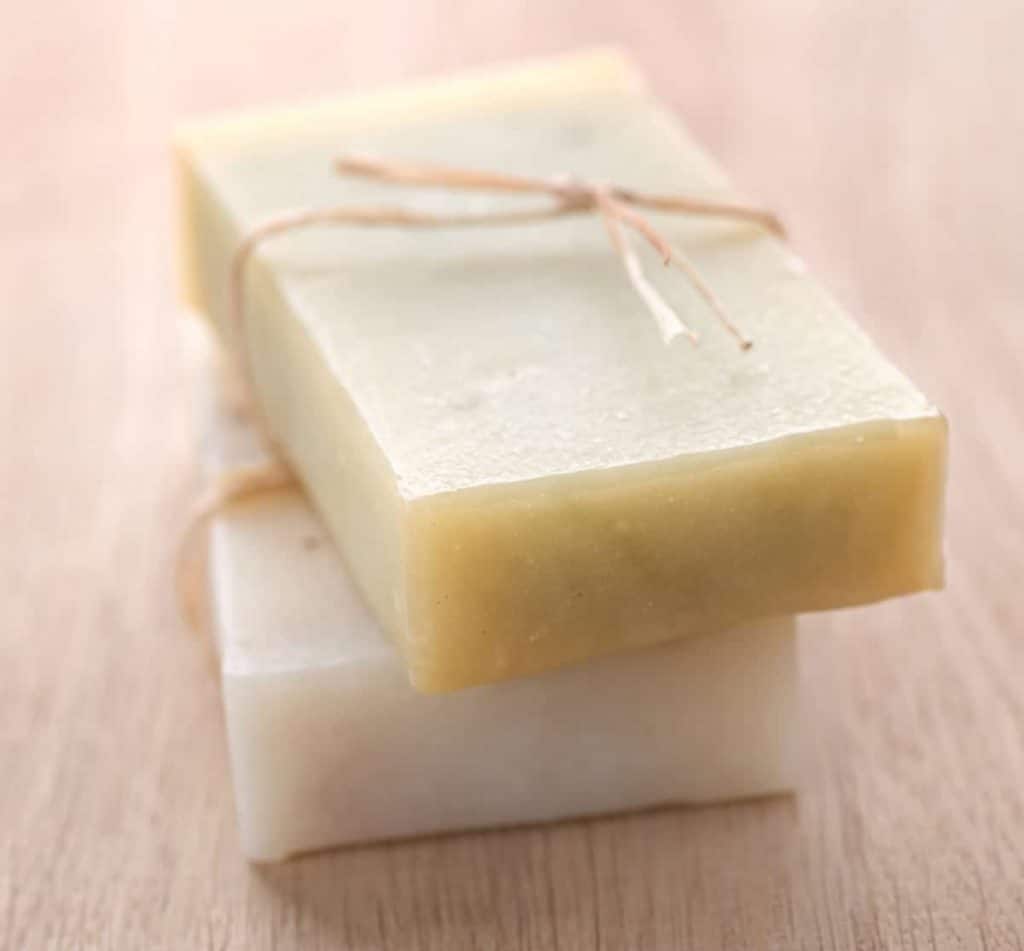
Why use SLS free products
If you have dry skin, sensitive skin, or are looking for more natural ingredients to use on your body, you might consider using SLS free products.
Why would you want to avoid SLS? Mainly because of the irritation it can cause on your skin. It’s one of the many ingredients used for cleansing that can bring about dryness, rashes, and flare-ups. You may need to switch up your body wash, shampoo, and conditioner.
If you have ever used a product and had an immediate reaction to it, you might want to consider an SLS free product.
Tip: SLS is not the only factor that can contribute to irritated skin. Synthetic fragrances (which typically comprise dozens of chemical compounds), and artificial dyes can also lead to itchy skin.
Gentler alternatives to SLS
Luckily, there are milder alternatives to sodium lauryl sulfate on the market: sodium cocoyl isethionate and sodium coco sulfate.
Both compounds derive from coconut oil and are biodegradable. While they are still synthetic detergents, they still offer mild cleansing and lathering properties, but are much gentler on the skin.
Sodium cocoyl Isethionate (SCI) noodles are also called baby lather (because it’s mild enough for a baby’s skin!). SCI works to remove oil and dirt while still leaving skin and hair soft. It’s commonly used in DIY whipped soap, shampoo bars, and other foaming face cleansers.
Sodium coco sulfate (SCS) granules are slightly stronger than SCI (but still milder than SLS) and are used in recipes as a secondary cleansing agent. It too is a gentle surfactant.
Unlike SLS which penetrates deep into the skin barrier, researchers believe SCI is milder because it doesn’t appear to enter the skin barrier, causing less irritation.¹¹
And, of course, there’s also natural soap that contains no SLS or other harsh surfactants.
The takeaway: what is SLS free and is it better?
The term “SLS free” can be misleading if the manufacturer simply replaces sodium lauryl sulfate with a similar harsh surfactant that may still irritate skin. The main problem with using products that contain SLS is its ability to dry or irritate skin.
While some people may experience no problems with SLS products, others with eczema or sensitive skin may choose to use products with milder surfactants.
Look for milder synthetic surfactants such as sodium cocoyl isethionate and sodium coco sulfate.
Natural bars of soap also are an alternative to synthetic detergents and don’t contain harsh surfactants.
Related questions
Is SLS necessary in toothpaste?
SLS appears in most toothpaste formulations because of its ability to create foamy lather and cleanse. If you experience gum irritation, or cracked skin around the mouth, you may have a sensitivity to SLS. Luckily there are some SLS free toothpastes on the market such as Sensodyne Pronamel and Verve Ultra.
Is SLS-free the same as sulfate-free?
No, these two terms are not the same. The term SLS free simply means the product doesn’t contain sodium lauryl sulfate. Sulfates, on the other hand, are a broad category of chemicals that can also include sodium laureth sulfate (SLES), ammonium lauryl sulfate (ALS), and many others.
New to making soap? 🧼❓
👉We have a fantastic overview on the whole soapmaking process here: read our Timeless Guide To Soapmaking.
If you would like to see our soapmaking posts organized by topic type, see our Soapmaking Collection.
Would you like more timeless tips via email?
Fun tips to help you live an independent, self-sustaining lifestyle. Opt-out at any time.


References
- Bondi, C. A., Marks, J. L., Wroblewski, L. B., Raatikainen, H. S., Lenox, S. R., & Gebhardt, K. E. (2015). Human and Environmental Toxicity of Sodium Lauryl Sulfate (SLS): Evidence for Safe Use in Household Cleaning Products. Environmental health insights, 9, 27–32. https://doi.org/10.4137/EHI.S31765
- Chemical Safety Facts, Sodium Lauryl Sulfate, https://www.chemicalsafetyfacts.org/sodium-lauryl-sulfate/. Accessed March 2022.
- Mohammed, Yousef (09 December 2019). “What is sodium lauryl sulfate and is it safe to use?,” The University of Queensland Australia. Accessed March 2022.
- Federal Trade Commission, Federal Register / Vol. 77, No. 197 / Thursday, October 11, 2012 / Rules and Regulations, https://www.ftc.gov/sites/default/files/documents/federal_register_notices/guides-use-environmental-marketing-claims-green-guides/greenguidesfrn.pdf. Accessed March 2022.
- U.S. Environmental Working Group (EWG), Sodium Lauryl Sulfate, https://www.ewg.org/skindeep/ingredients/706110-SODIUM_LAURYL_SULFATE/. Accessed March 2022.
- Geier, J., Uter, W., Pirker, C., & Frosch, P. J. (2003). Patch testing with the irritant sodium lauryl sulfate (SLS) is useful in interpreting weak reactions to contact allergens as allergic or irritant. Contact Dermatitis, 48(2), 99–107. https://doi.org/10.1034/j.1600-0536.2003.480209.x
- Patil, S., Singh, P., Sarasour, K., & Maibach, H. (1995). Quantification of sodium lauryl sulfate penetration into the skin and underlying tissue after topical application–pharmacological and toxicological implications. Journal of pharmaceutical sciences, 84(10), 1240–1244. https://doi.org/10.1002/jps.2600841018
- Berardesca, E., Vignoli, G. P., Distante, F., Brizzi, P., & Rabbiosi, G. (1995). Effects of water temperature on surfactant-induced skin irritation. Contact dermatitis, 32(2), 83–87. https://doi.org/10.1111/j.1600-0536.1995.tb00751.x
- Branco, N., Lee, I., Zhai, H., & Maibach, H. I. (2005). Long-term repetitive sodium lauryl sulfate-induced irritation of the skin: an in vivo study. Contact dermatitis, 53(5), 278–284. https://doi.org/10.1111/j.0105-1873.2005.00703.x
- World Health Organization (WHO), ILO. International Chemical Safety Card for Sodium Lauryl Sulfate (ICSC 0502), https://www.ilo.org/dyn/icsc/showcard.display%3Fp_card_id%3D0502. Accessed March 2022.
- Ghosh, S., & Blankschtein, D. (2007). Why is sodium cocoyl isethionate (SCI) mild to the skin barrier? – An in vitro investigation based on the relative sizes of the SCI micelles and the skin aqueous pores. Journal of cosmetic science, 58(3), 229–244.

Author: Josh Tesolin
Josh is co-founder of RusticWise. When he’s not tinkering in the garden, or fixing something around the house, you can find him working on a vast array of random side projects.

